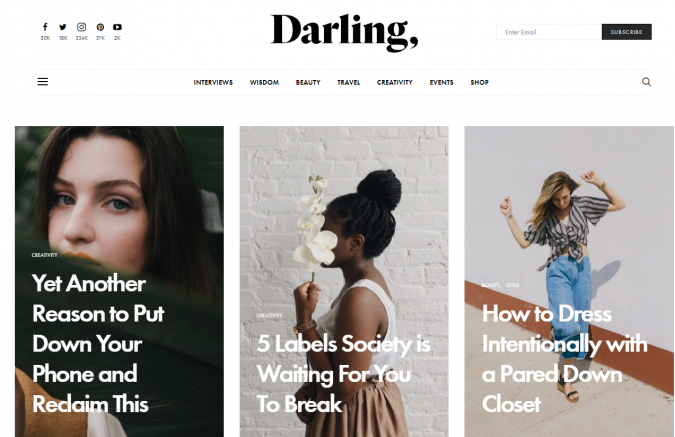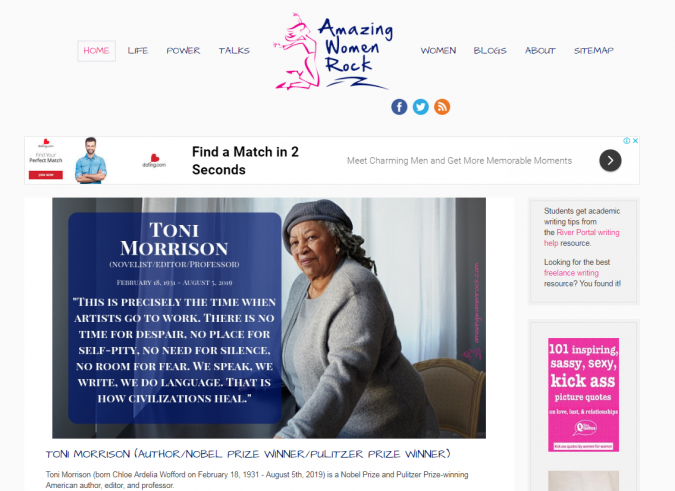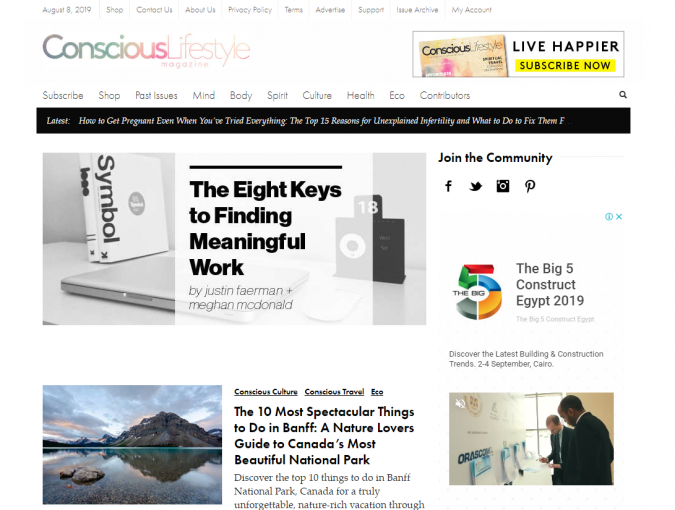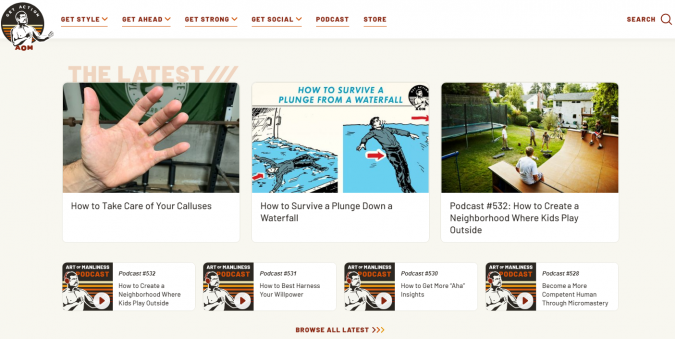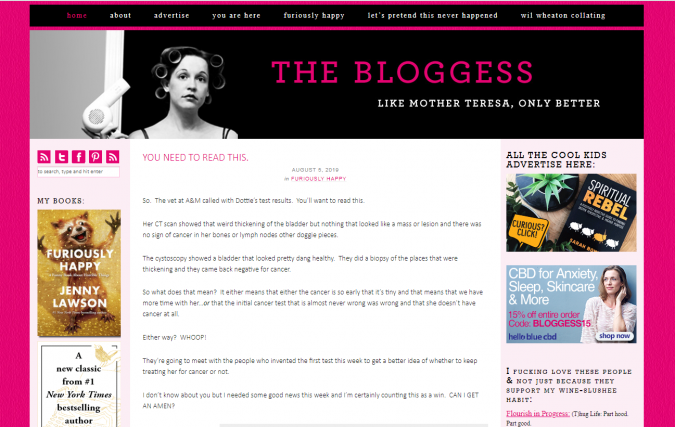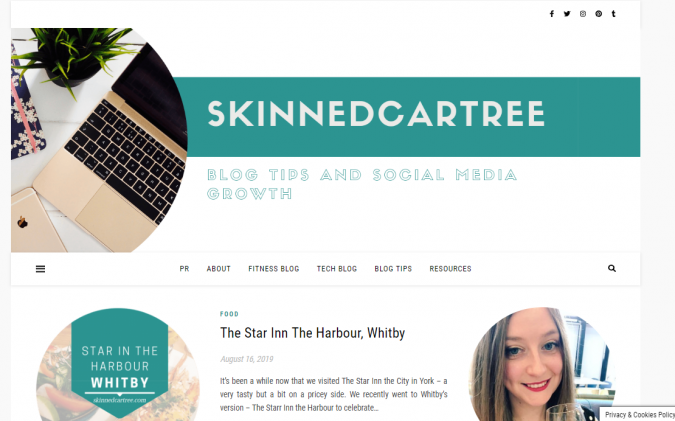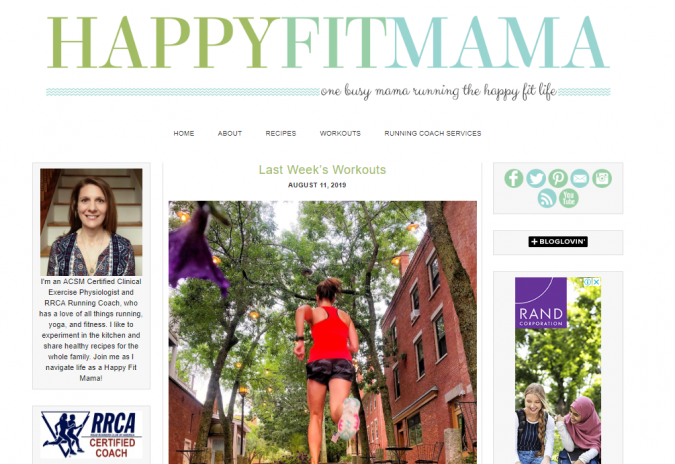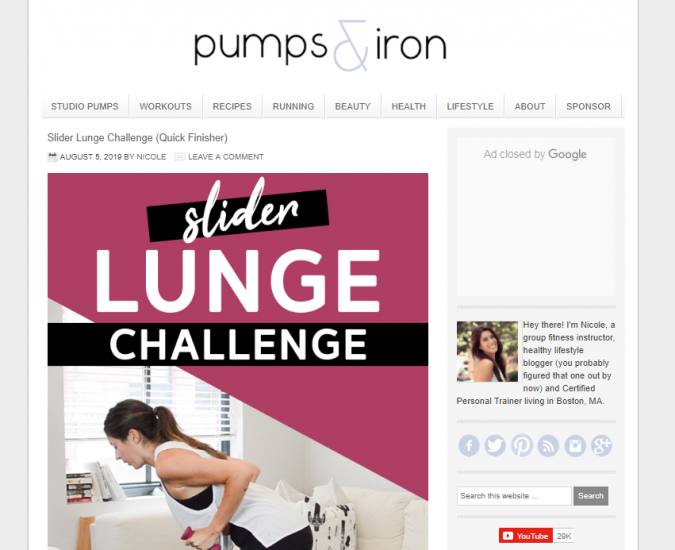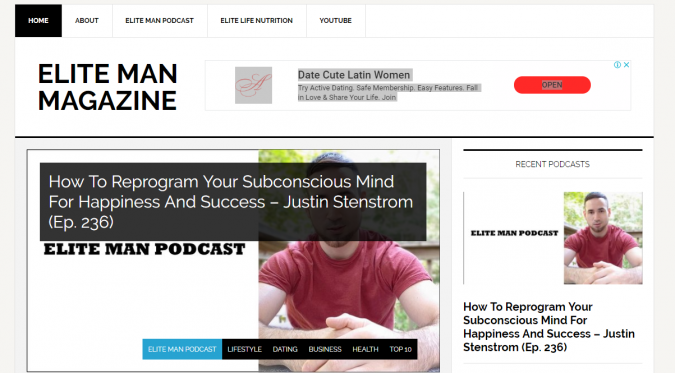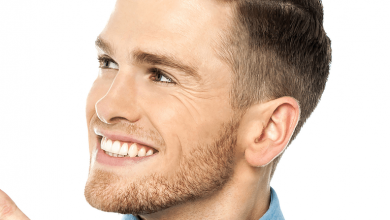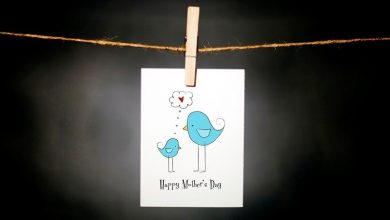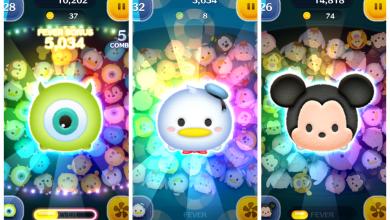Who does not like to read lifestyle content? Not many, I guess. It is fun, interesting, and most importantly, closely related to our everyday life. There are many lifestyle websites and blogs out there. However, high-quality content is what you should focus on reaching. The reason is simple; in the fast-paced life we are living, time is too precious to waste on poor articles that do not enrich your knowledge and understanding of life, relationships, travel bloggers’ steps, your health, and well-being. Therefore, Pouted lifestyle magazine presents you with 50 of the best lifestyle blogs and websites to follow this year. The selection depended on the following factors:
- Years of experience
- Frequency: Some sites provide daily or regular fresh content, while others post infrequently.
- Numbers of followers on social media
1 Mind Body Green
Initiated in 2009, Mind Body Green is a lifestyle website that aims to help its readers live more holistically, healthily, and happily. They post fresh content daily on a wide variety of topics, including meditation, yoga, healthy food, relationships, home decor, etc.
Facebook 3M, Instagram 813K
2 Better Living
Better Living was founded in 2002 by Eric Weiss and Heather LaCorte. It is a lifestyle magazine that presents fresh content nearly every week. The topics are on health, travel, food, home, etc. There are food recipes, road trip tips, posts on nutrients and supplements for skin, nails, and hair, etc.
Facebook 89K, Instagram 117K
3 Ask Men
Ask men started in 2000 as a lifestyle blog that posts on cars, travel and hotels, fitness, grooming, fashion, accessories, etc. They seek to help their readers become better men and experience life to the fullest.
Facebook 1M, Twitter 186K
4 Cafe Mom
Launched in 2006, Cafe Mom is an online community for the mother bloggers. There are several new posts daily about parenting, celebrities, travel, healthy food, etc. They do not post new content every day, but they publish several fresh posts each couple of days.
Facebook 437K, Instagram 18K
5 A Cup of Jo
A Cup of Jo started as a hobby of its owner, nearly in 2008. Joanna Goddard, the founder, is a women lifestyle journalist who worked for renowned magazines, including Cosmopolitan, Bene, Glamour, and New York. The Award-winning blog has almost always two new posts daily or day after day about style, design, travel, relationships, food, etc.
Facebook 69K, Instagram 188K
6 Goop
Gwyneth Paltrow’s lifestyle brand was launched in 2008. Through her blog, the superstar and businesswoman shares her interests, writing about travel, beauty, style, cooking, exercising, wellness, etc. It also includes expert advice and tips from doctors and others.
Facebook 522K, Instagram 1M
7 Por Homme
Por Homme is an online lifestyle magazine for men started in 2008. It presents news on the latest style and design trends, gadgets, cars, etc. The blog provides nearly ten posts monthly.
Facebook 13K, Instagram 19K
8 Darling Magazine
The online magazine showed up in 2009 as a lifestyle website for women. Their empowering content aims to help modern ladies to meet the challenges of today’s life with a true, strong feminine attitude. They believe that a woman is a work of art, and it is up to her to explore her uniqueness and use it to influence reality. The magazine discusses topics that include travel, reading, style, food, home decor, etc.
Facebook 52K, Instagram 335K
9 Amazing Women Rock
Susan Macaulay launched Amazing Women Rock in 2009. It presents topics and videos about role models all around the world. It is indeed a worth-following website. Besides, the blog contains posts on relationships, holiday traditions, style, travel, dealing with business and family life, financial tips, etc.
Facebook 153K, Twitter 23K
10 BlogHer
Blog Her appeared in 2005 to be a platform that seeks to inspire women to succeed and encourage them to opt for perfection in whatever they do. To do so, they tell success stories of other ladies who managed to overcome the obstacles and create their own paths. The blog is the product of collective voices of empowering social media influencers and content creators. It includes lifestyle topics on social media, exercising, reading, tips for finding a job, etc. Blog Her does not have stable publishing frequency; sometimes they post more than 15 articles monthly, and other times, only a couple of posts.
Facebook 61K, 51K Instagram
11 Hombre
Hombre started in 2005 as an American lifestyle magazine for Latin men. It provides topics on health, travel, finance, sex, style, grooming, fitness, cars, etc. There are also interviews with world leaders, influencers, and celebrities. It is a paper and online publication; so, most of the time, you will find regular fresh content.
Instagram 86, Youtube 1.3K
12 Conscious Lifestyle
The online magazine aims to raise its readers’ awareness about themselves, their lives, and the world. They provide topics about health, sexual life, food, beauty tips, meditation, art, music, etc. They focus on in-depth stories and content that bears real knowledge, wisdom, and passion.
Facebook 55K, Instagram 58K
13 A Beautiful Mess
Two close friends, Elsie Larson and Emma Chapman, launched the blog in 2007, aiming to help their readers improve their lifestyles. A Beautiful Mess includes sections on crafts and DIY-ing, home decor, style, recipes, tips, and advice, etc. Following them, you will learn, for example, how to make a sandcastle cake, prepare a mermaid party, and choose color schemes for different purposes. They update their content once or more sometimes a day.
Facebook 91K, Instagram 641K
14 Cupcakes and Cashmere
The lifestyle magazine was founded in 2008 by Emily Schuman. It presents articles about baking, fashion, beauty, travel, decor, etc. You will learn about new makeup trends, packing tips, solutions for greasy hair, styling dried flowers, etc. Schuman tackles issues of motherhood and childhood too. The blog has two new posts daily, and sometimes each couple of days.
Facebook 501K, Instagram 490K
15 Vulcan Post
Vulcan Post is a tech lifestyle blog founded in 2009 by Goh Bing Han and Jared Alex Tan. It presents news about the latest technology and topics on products to use in daily life and the effects of technology on people’s lifestyles and interactions. Vulcan post has regular, new content daily, or each couple of days.
Facebook 76K, Instagram 2K
16 The Art of Manliness
The lifestyle website aims to present the man all he needs to be a true gentleman. Founded in 2007 by Brett and Kate McKay, it includes topics on relationships, socializing with others, exercising, men style, etc. Their content is fresh and updated; there is a new post daily, and sometimes day after day. There, you can find tips on a variety of stuff, such as changing the oil on a motorcycle, getting rid of bad odor in shoes, surviving an alligator attack, and securing better financial future. You could also read about hair cuts for different face shapes, balance exercising, the history of Indian tribes in ِAmerica, etc.
Facebook 1M, 182K Instagram
17 LiveStrong
LiveStrong is a lifestyle website initiated in 2008. By its content, it presents its readers a guide on living simply and healthily. It primarily focuses on supporting people who seek fitness to continue their journey successfully. You will find tips on stopping emotional rating, maintaining a healthy diet, avoiding air pollution while exercising outside, etc. There are regular new posts daily or each couple of days. They also provide a calorie tracker, My Plate, and a calorie counter mobile app.
Facebook 1M, Instagram 70K
18 Primer
Launched in 2008 by Andrew Snavely, Primer is a men’s lifestyle magazine that primarily addresses the guys in their 20’s. It discusses several topics, including personal wellness, career success, style, etc. You will read about affordable watch brands, selected clothing items on Amazon, hacks to improve the daily life, lessons on leadership, etc.
Facebook 21K, Twitter 17K
19 Corporette
It is a work and business fashion blog initiated by Kat Griffin in 2008. Corporette offers a lot of tips and ideas on how to dress up to work simply yet elegantly. It also presents work and career advice. Corporette publishes 2-4 posts daily or each couple of days. Quite interesting topics are available, such as “What to Wear to a Very Casual Office,” “A Week in the Life of a Working Woman,” branded beauty products and clothing items reviews.
Facebook 13K, Instagram 8K
20 Ape to Gentleman
Ape to Gentleman lifestyle magazine presents a variety of topics, including fashion brands, dressing tips, anti-aging skincare, beard transplant, electric cars, useful books, alcohol-Free beers, etc. For example, you will read about the first luxury fragrance houses, the best summer shirts and shoes, warm-weather suits, and beard transplants. Ape to Gentleman entered lifestyle blogging in 2009.
Instagram 33K, Facebook 17K
21 Capital Lifestyle
If you are fond of knowing about lifestyles in other countries, you will probably enjoy following Capital Lifestyle. It is a Kenyan blog initiated in 2010 and provides lifestyle news stories and articles daily. Their topics include music, art, travel, relationships, style, etc. They present regular fresh content daily or each couple of days, and sometimes they publish two posts a day.
Facebook 13K, Instagram 83K
22 Huckberry
Huckberry is an online store for men that started in 2010. They have an excellent blog of high-quality lifestyle content. They provide regular enough posts, daily or each couple of days, on travel, DIY-ing, food, drinks, entrepreneurship, home decor, along with lists of the best clothing pieces.
Facebook 250K, Instagram 317K
23 Man Made DIY
Another impressive blog that started in 2010 is Man Made DIY. It has been exploring the world of handmade and independent crafts. They provide excellent, beneficial content on how to incorporate this collected knowledge into the life of today’s man. On the blog are sections for DIY-ing, art, design, food, drink, and gear. 6-7 posts are published monthly. Plus, Its design is quite impressive and expressive of its nature.
Facebook 17.5K, Twitter 7K
24 MensXP
This time from India comes MenXP lifestyle website. It posts about health, nutrition, bodybuilding, technology, Indian celebrities, their fashion, and grooming, etc. It is an active online magazine; they provide daily fresh content. On MensXP, you will read about Indian fashion designers and their new production, how to decide your ideal beard, the best exercise cycles, and GYM equipment for home, etc.
Facebook 3.6M, Instagram 231K
25 The Bloggess
The Bloggess is a personal blog for Jenny Lawson who launched it in 2008. It contains a variety of lifestyle posts about motherhood, love, sex, etc. Lawson is the author of books, including Furiously Happy, Let’s Pretend This Never Happened.
Facebook 191K, Twitter 467K
26 Wet & Delight
Launched in 2009 by Kate Arends, Wet & Delight blog aims to enrich the lives of their followers by sharing their experiences and knowledge regarding love, relationships, natural beauty methods, books, food, etc. You will read about morning rituals to employ, tips on saving money, kitchen remodeling, creating kids’ space, etc. There is a new post daily.
Facebook 14K, Instagram 335K
27 Forever 21
Forever 21 is an Indian clothing retail company and online store founded in 1984. Their website comprises a lifestyle blog, Forever Yours, that provides about eight new posts monthly on categories that include beauty, fashion, food, and wellness. Their Facebook page was initiated in 2009, and they have a massive follower base on social media.
Facebook 15.4M, Instagram 16.5M
28 Akanksha Redhu
It is another blog for the fans of reading about different lifestyles. Akanksha Radhu is an Indian blogger who initiated her blog in 2010. She writes about style and outfits, traditional and modern, Indian landmarks, travel, etc. Among what you will find, are posts on the Golden Temple in Amritsar, the best restaurant in Leh, Kurta and pants which is a traditional Indian outfit, etc.
Facebook 40K, Instagram 195K
29 Gal Meets Glam
Julia Engel, the founder of the blog, is from California. She initiated it in 2011, aiming to add some glam to her readers’ lives. There are sections on style, beauty along with an online shop. Engel posts new content daily or day after day.
Facebook 471K, Instagram 1M
30 The Chalkboard
Launched in 2011 by Melissa Norton, The Chalkboard has been showing its readers ways to live well and enjoy the blissfulness of life. The online magazine includes expert insights on nutrition and well being, healthy recipes, natural beauty tips, etc.
Facebook 82K, Instagram 287K
31 Man for Himself
Man for Himself is a lifestyle magazine founded by Robin James in 2012. It produces fresh content every two or three days about food and drink, travel, home, cars, tech, style, grooming, etc. You will find topics on burnout syndrome, the best-dressed men in London in summer 2019, hair products for sun protection, hair loss treatments, etc.
Instagram 31K, Facebook 11K
32 M2
M2 showed up in 2005 as a paper lifestyle magazine that targets New Zealand men. Later on, M2 Women and M2 Success Summit were launched in 2008 and 2019, respectively. Its social media platforms, Twitter and Facebook, appeared in 2009 and 2010. The blog has topics and news on sports, style, cars, meditation, etc.
Facebook 18K, Instagram 3.5K
33 Skinnedcartree
This time from England comes Corinne and her lifestyle blog Skinnedcartree. She started it in 2012. The blog has a fresh post everyday. The topics vary, including style, beauty, fitness, social media, etc. You will read about how to use Twitter as a therapy, the difference between Instagram stories and Instagram posts, natural soap brands, dresses under 30 euros, learning piano, and more.
Twitter 11K, Pinterest 5K
34 Happy Fit Mama
Angela, a certified clinical exercise physiologist, running coach, and yogi, initiated this blog in 2012. She shares tips on health, fitness, body strengthening, etc. The blog also includes topics on food and recipes. Angela posts about six to eight times a month.
Twitter 11K, Pinterest 10K
35 Mankind Unplugged
Another lifestyle blog for men, but this time from a woman’s view, Mankind Unplugged also started in 2010. It has sections for guys’ stuff such as carry-on bags, clothing pieces, cars, mobile apps, etc. There are also grooming, travel, and gear categories. The blog provides from two to three posts monthly.
Pinterest 10K monthly viewers
36 Pumps & Iron
Since 2012, the lifestyle blog has been focussing on fitness and exercise, for a good reason. Nicole Pearce, the owner, is a certified personal trainer. Her posts are infrequent yet useful. She writes and posts pictures and videos on workout sessions, exercise positions, using resistance bands, kettlebell, etc. Also, among the presented topics are nutritious food, healthy recipes, beauty, health, travel, etc.
Facebook 9K, Instagram 12K
37 Elite Man Magazine
Elite Man Magazine is a lifestyle and personal development website initiated by Justin Stenstrom in 2013. It comprises men’s self-help podcast that numerous gentlemen around the world follow. The videos are of various topics, including tips on mastering social skills, becoming a successful man, thinking for yourself.
Facebook 15K, Instagram 4K
38 Ladygunn
Launched in 2013, the lifestyle magazine comes in a quarterly print and online versions. Ladygunn website includes a variety of sections and topics, including music, indie movies, art, fashion, etc. They mostly post once, sometimes twice, daily or each couple of days.
Facebook 14K, Instagram 43K
39 Barefoot Blonde
From New York where Amber Fillerup Clark, the owner, is based, comes Barefoot Blonde blog. Clark presents her readers useful, yet infrequent, lifestyle posts on makeup, hair, travel tips, and life and relationship experiences. Plus, the family photos she posts with her content are captivating.
Facebook 32K, Instagram 1.4M
40 SuperHit Ideas
Founded in 2013, SuperHit Ideas, as its name suggests, aims to present its readers who love trying new things inspiring, fresh ideas on home decor, DIY-ing, travel, tattoos, hairstyling, health, fitness, etc. The posts have no constant frequency; they range from six to twelve a month.
Facebook 75K
41 Social Magazine
Founded in 2012 by Olivia Rahim, the online magazine presents different lifestyle topics, including art, music, movies and other cultural elements, men and women fashion, beauty, health, etc. The posts are regular enough yet not daily.
Facebook 7K, Instagram 125K
42 Create and Cultivate
Another excellent lifestyle content to follow is Create and cultivate. Jaclyn Johnson founded it in 2014 to be a community for entrepreneur ladies and those who pursue careers that match their passions. The website provides regular fresh posts, sometimes daily and day after day in other times, on examples of entrepreneurs who left secure jobs to start their own projects and startups. There are also topics on home decor, work interview tips, etc.
Facebook 101K, Instagram 504K
43 Sazan
Sazan Barzani is a lifestyle blogger who started blogging in 2011. Her blog comprises various sections, including travel, food, fitness, beauty, style, etc. Her posts are infrequent, yet beneficial when come.
Facebook 39K, Instagram 1M
44 Mantelligence
As the name suggests, it is a lifestyle website for men that aims to present everything they need to know. They offer useful tips and viewpoints regarding dating, relationships, gifts, good questions to ask a girl, etc. Mantelligence also provides lists on several topics, including hobbies to try, best bears of the month, and even excellent compliments to say. The blog started in 2013.
Youtube 427K, Facebook 5K
45 Middle Aged Mama
Middle Aged Mama blog started in 2012. Janet Camilleri, also calls herself the Middle Aged Mama, blogs about how to enjoy a new life after your kids grow. She writes about fashion, beauty, travel, relationships, etc. from a lively personal perspective.
Instagram 3.4K, Facebook 2K
46 Lifestyle Fifty
As its name reveals, Lifestyle Fifty targets ladies in their 50s. Since its launch in 2013 by Johanna Castro, it has presented topics and tips on travel, how to dress well, stay fit and healthy, etc. Castro blogs about trendy clothing pieces and right places to buy them, personal style and fitness after 50, motivational books, etc.
Instagram 9.5K
47 The Edge Search
Initiated in 2015, the Edge Search lifestyle blog shares new posts daily about new events, business, health, fitness, fashion, food, travel, etc. It includes useful tips, accessory DIY ideas, etc.
Facebook 10K, Youtube 3.4K
48 Gentleman’s Thought
It is a lifestyle blog, also launched in 2015. Gentleman’s Thought motivates guys to acquire the qualities that make them true gentlemen, including confidence, respecting others, etc. There are posts on fountain ink pens, colognes, hair oils, body washes, sneakers, business card holder wallets, school backpacks, etc.
Facebook 43K, Pinterest 23K
49 Stemjar
Stemjar’s owners, Manish Madhukar and Rupesh Kumar, initiated it in 2017. They have made the blog a place where they gather the best ideas they create or find from the different fields of life. For example, you would read about natural herbs like turmeric, ways to lose weight during menopause, best web browsers, hosting a website on a personal PC, etc.
Facebook 8K, Instagram 4K
50 Grit Daily
Grit Daily was launched in 2018 by Drew Rossow and Jordan French. They present fresh news and articles on entrepreneurship, tech, sports, style, brands, celebrities, etc. They have new posts daily.
Facebook 49K, Instagram 8K
A vast amount of lifestyle content is available out there on the World Wide Web. Pick the websites and blogs that enrich your life and knowledge.








